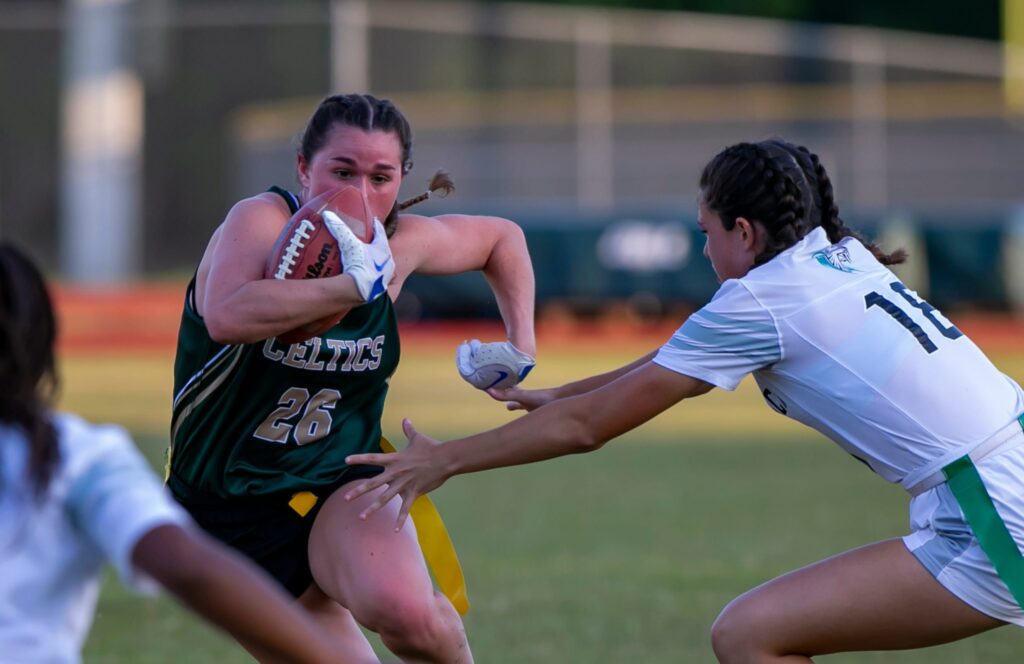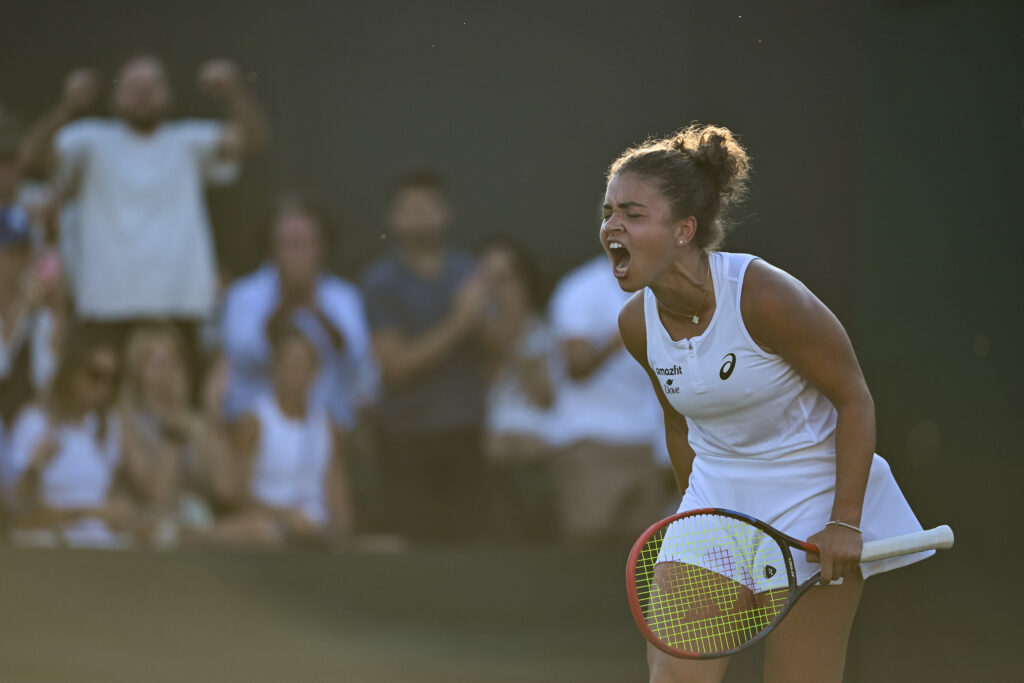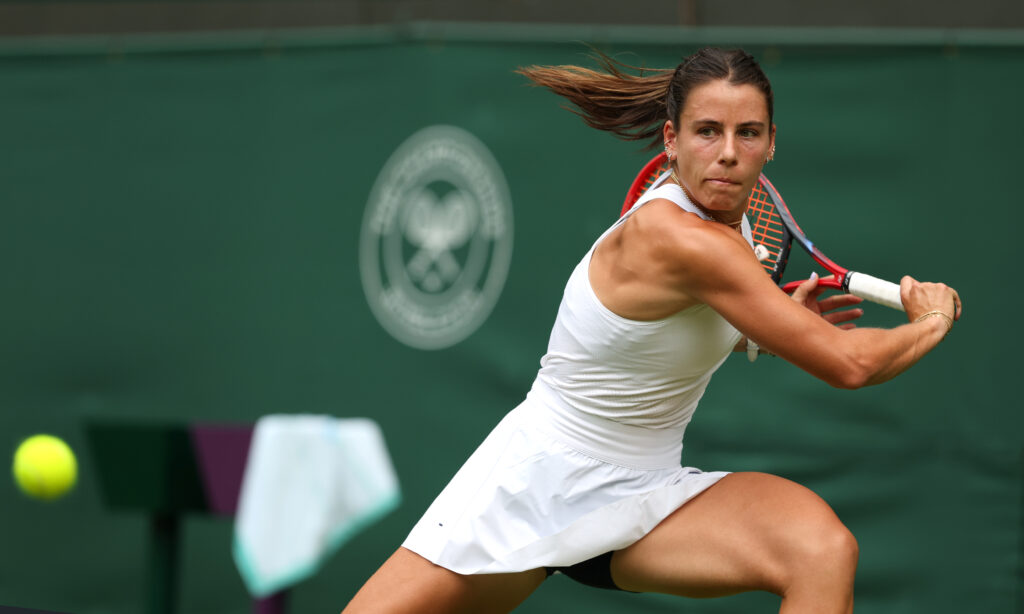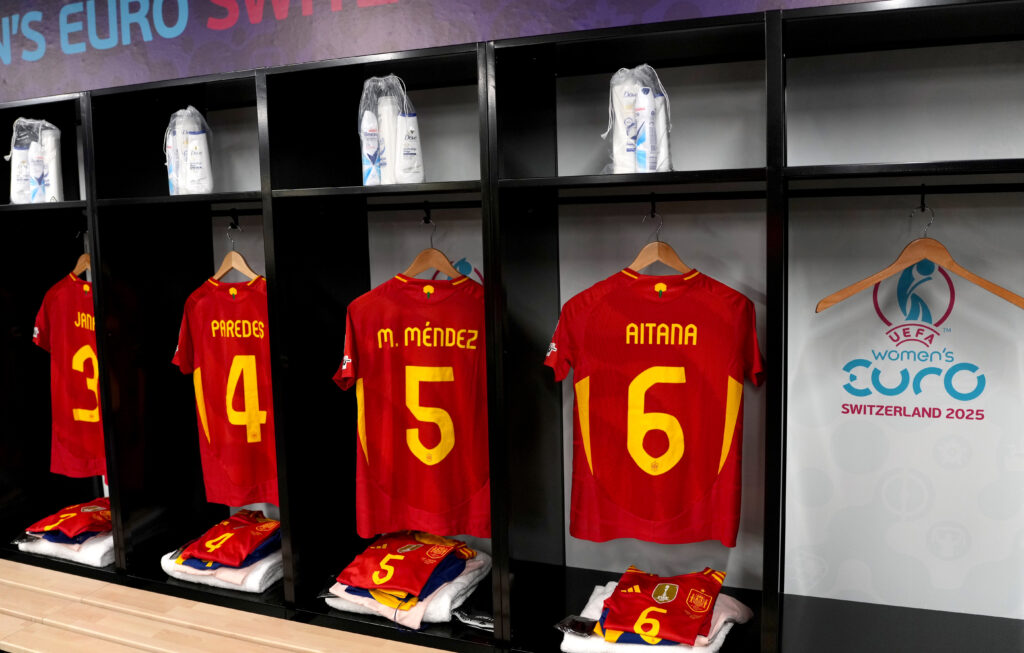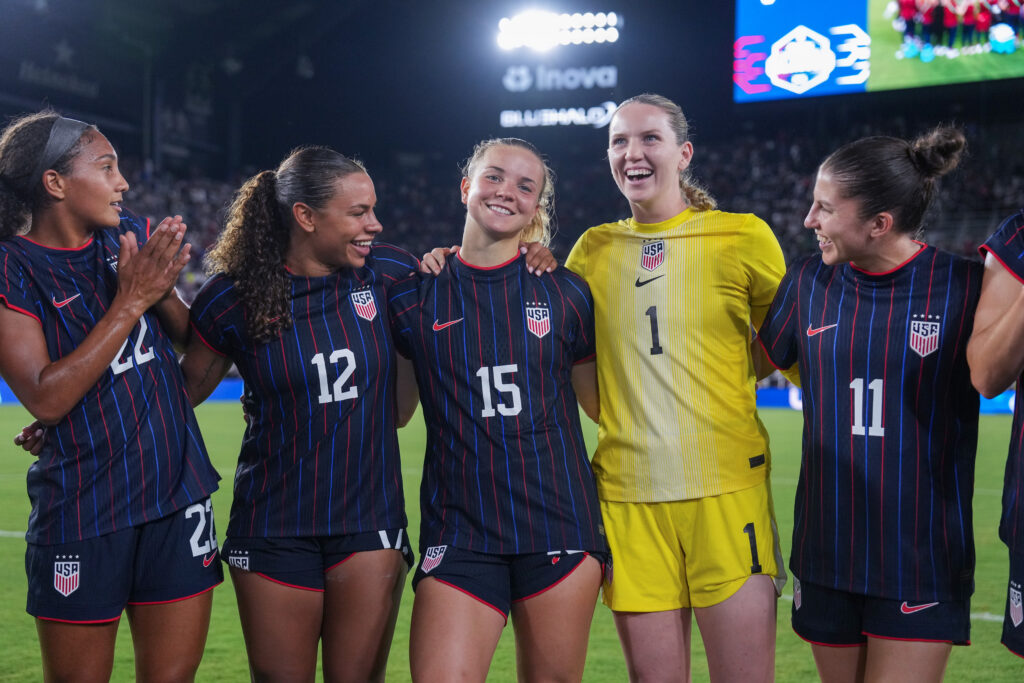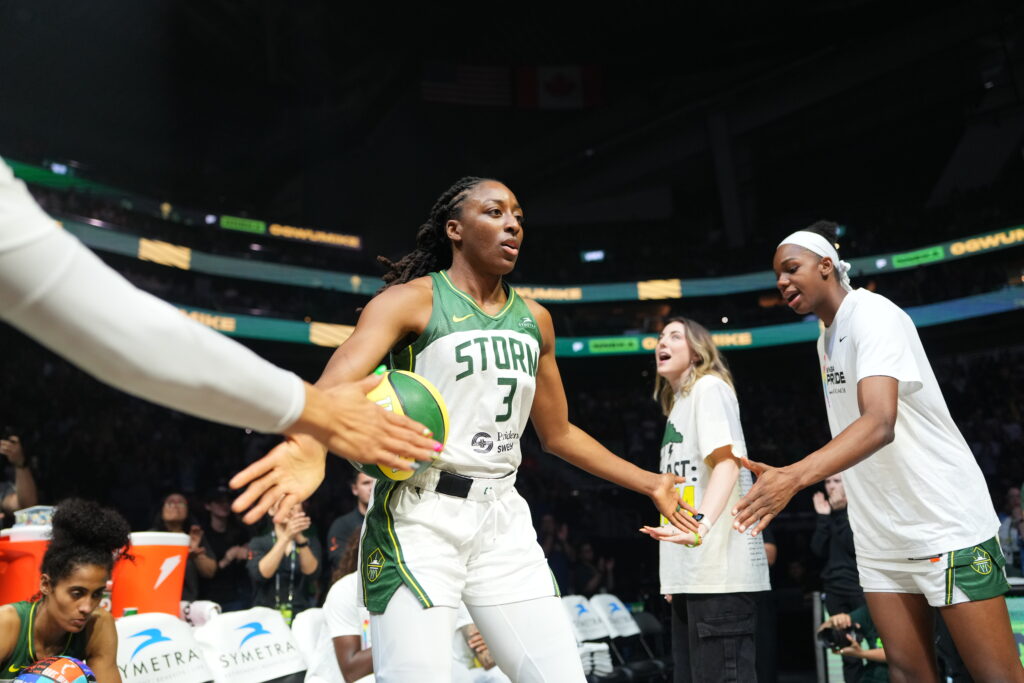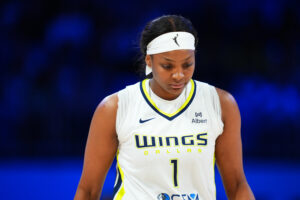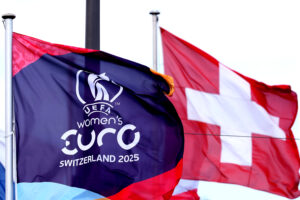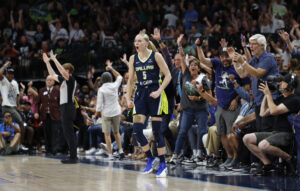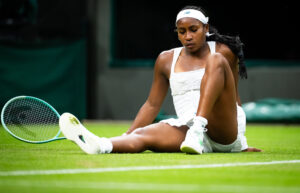Highlights of girls and women making stunning plays in flag football have been going viral in increasing numbers in recent years, and that’s because the sport is spreading like wildfire across the country, partly due to the recent initiative between Nike and the NFL that committed $5 million in product to grow girls flag football in high school athletics. State athletic associations can now apply for a one-time donation of up to $100,000 in product to go toward launching or supporting girls flag football.
In the latest augmentation of the initiative, Nike and the NFL have invited two of the top high school girls flag football teams in the country to square off this Friday as part of the inaugural Nike Kickoff Classic celebrating the return of football season across the country. In the grandest spotlight the sport has yet been given, the Alonso (Fla.) Ravens will take on the Robinson (Fla.) Knights at 3 p.m. (PT) in a game that will be broadcast nationwide on NFL Network YouTube from Ronaldo Field at Nike World Headquarters in Beaverton, Ore.
Beyond the flashy dollar signs and viral game clips, the participation numbers of girls in the sport reveal that real growth is happening where it matters. When the NFL and Nike first announced their initiative to grow girls flag football, six states sponsored the sport (Alaska, Arizona, Florida, Georgia, Nevada and New York).
Since that announcement, one academic year has passed, and two more states have officially added the sport — Arkansas and Alabama — with California set to launch its program in 2023. In 2010, there were 6,235 girls playing high school flag football. By 2018, the latest data set available, that number had grown to 11,209 and that was three years before the boost from Nike and the NFL.
One person who has noticed the recent flame of popularity for the sport is Diane Beruldsen, founder of the International Women’s Flag Football Association (IWFFA), who has been playing and growing the sport of women’s flag football since the 1970s.
“I have to say, with the NFL’s advertisements, their excitement, they really have increased the number of flag football players for girls and women,” Berulsden said. “The last three years, I’d say, flag football has really bloomed.”
Just like all other sports, women have been playing football since its inception. They may have been off in the margins, away from mainstream attention and approval, but they were there. Women’s tackle football leagues have existed in the U.S. since the 1960s, as recently documented in “Hail Mary: The Rise and Fall of the National Women’s Football League,” and continue today with not one but two elite leagues (the Women’s Football Alliance and the Women’s National Football Conference) pushing the game forward.

It’s no different with flag football, which women have been playing since soon after its inception in the 1940s and ‘50s.
“In the early years, we had to fight for field space,” Berdulsen said. “It would be the men first, then the boys, then the girls, then the women last.”
According to Beruldson, the first organized women’s flag football league was started in 1971 by Philadelphia’s Parks and Recreation Department and still continues today, now with 28 teams. Through the ‘70s and ‘80s, more leagues formed across the U.S. Beruldson herself spearheaded leagues in Brooklyn (1985), New York (1990) and Key West (1991). By 2001, the annual tournament she hosted in Key West included 49 teams and had added divisions for girls and juniors between the ages of 8 and 15.
It’s no surprise that when Florida became the first state to sanction girls flag football as a varsity sport in 2002, there were 103 schools and 3,855 participants across the state. Today, 320 schools in the state have teams.
Nevada had similar success when one of the state’s school districts launched a girls flag football program in 2014 after a student survey aimed at increasing girls participation in athletics revealed flag football received the highest interest amongst prospective new sports. Thirty-seven schools in the state now sponsor the sport for girls.
In Georgia and Alabama, financial support from the NFL’s Atlanta Falcons has been instrumental in launching their programs through grant money that schools can apply for and use for a variety of needs such as game officials and coach stipends. Georgia had 191 teams participate in just its second year of sanctioning the sport last season, and Alabama has 44 schools registered for its pilot program this year.
Beyond the financial commitment from the NFL and Nike, flag football has other appealing attributes that are contributing to its growing popularity.
For one, it’s a relatively low-cost sport in terms of equipment and facilities for athletic departments to add, especially for those that already sponsor tackle football. It also taps into the massive popularity of American tackle football. Its familiarity makes it attractive to new players, parents, and athletics supporters.
Lastly, its roster sizes are large enough to significantly increase the numbers of girls participating in sports for a given school, district and state.
“According to the National Federation of State High School Associations, there are one million fewer female high school athletes participating in sports than their male counterparts. This discrepancy is largely due to football,” Nike said via email. “As one of the fastest growing sports in the U.S., flag football provides girls with another opportunity to play and compete in sport and has the power to make a difference during a crucial period in their athletic development.”

Given that the noted disparity in high school athletics participation numbers is hardly a recent finding, it’s logical to wonder why now? Or more accurately, why not until now?
The obvious answer is that gendered social norms have always deemed tackle football a strictly male sphere. The women who played the game in the early decades went boldly against the grain, and many girls and women playing tackle football today still face significant backlash.
If individual families and communities haven’t been encouraging girls and women to pursue football in grand numbers, it’s no surprise that large organizations haven’t done so either, which reveals a fourth attribute that makes flag football so appealing — it’s not tackle football.
With increasing awareness and concern over concussions in athletics, especially in football, and persistent reluctance to see traditional tackle football as a girls game, flag is a very alluring version to promote.
Within flag football, there are many different variations. The main demarcation is how many players are on the field at a time. Beruldson believes the 8-on-8 variation played and taught by the IWFFA has the most to offer athletes. Whereas in 5-on-5 and 7-on-7, there is no blocking allowed, the 8-on-8 version includes blocking and most closely resembles the 11-on-11 tackle version of the game, making it a sport that requires and values a wide variety of body shapes and athleticism.
The existing national tackle football leagues for women — the WFA and WNFC — are thrilled with the explosion of flag football at the youth and high school levels. From their perspective, flag football is a direct gateway to the tackle version of the game.
“As flag develops, girls want to put on helmets. It’s just some girls are tackle football players,” said Odessa Jenkins, founder and CEO of the WNFC. “I don’t care what you do, how many flags you let her pull, she wants to tackle. She wants to get physical.”
Women’s football leaders across the board are also thrilled by the fact that flag football is now a sponsored varsity sport at 15 colleges in the National Association of Intercollegiate Athletics. Once again, the NFL was integral to this development, partnering with the NAIA to create the infrastructure and operations required to add the sport and serving as the presenting sponsor of the NAIA Football National Championships.
The recent rise of girls flag football across the country may give the impression that the sport was pulled out of thin air, but women have been playing and growing the game on their own for decades. What we’re seeing now is the incredible growth that’s possible when power players like Nike and the NFL come together to promote the natural athleticism and desire to play.
“What drives us is the possibility of inspiring more girls and women to see themselves in sport,” Nike said via email. “This grant demonstrates Nike’s continued commitment to inspire girls to continue to keep playing.”
Tessa Nichols is a contributing writer at Just Women’s Sports.
